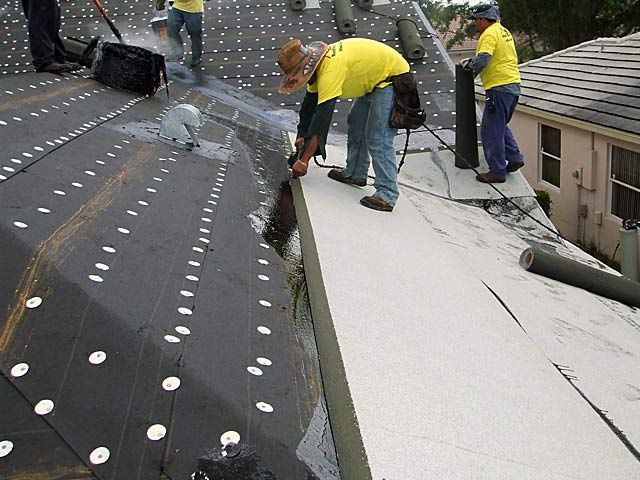When it comes to protecting your home, the roof plays a essential role in preserving its stability and worth. Nonetheless, many homeowners may encounter challenges when it comes to managing their roof needs, especially when it comes to insurance claims. Comprehending the details of roofing insurance claims can not only make the process easier but also guarantee that you are adequately prepared when problems arise. This guide seeks to outline the steps involved, from identifying when it might be time for a new roof to managing the intricacies of coverage and claims.
In this detailed guide, we will cover key topics related to roofing, including the lifespan of different materials last, common roofing problems and how to fix them, and the significance of regular inspections for ensuring your roof's health. Whether you're considering a do-it-yourself repair or hiring a specialist, knowing the factors that influence roof installation costs and lifespan will empower you to make informed decisions about your investment in roofing. Let's explore further into the world of roofing insurance claims and examine the best practices for ensuring your home remains secure and protected against risks.
Understanding Roof Durability and Material Choices
When considering a new roof for your home, a most important factors is the duration of the roofing materials. Different options come with varying durabilities, which can dramatically influence both immediate and future costs. For example, asphalt shingles typically last around 15-30 years, while metal roofs can last for 40 to 70 years or beyond with proper maintenance. Comprehending these variances helps homeowners choose wisely that align with their financial plan and environmental conditions.
Choosing the appropriate roofing material is not just about longevity; it also involves taking into account the visual appeal and functionality appropriate for your home. Factors such as climate, slope, and style of your house play a significant role in this decision. For instance, tile roofs are often chosen in warmer climates for their insulating properties, while flat roofs might be better suited for modern-style homes. Additionally, understanding the advantages and disadvantages of various materials, like cedar shake versus asphalt or metal, helps homeowners strike a balance between strength and aesthetic value.
In addition to aesthetics and lifespan, the selection of roofing material can affect energy savings and maintenance requirements. Affordable roofing Kearney -friendly roofing choices are becoming trendy for their sustainability and energy-saving capabilities. Homeowners should also take into account the installation complexity and ongoing upkeep associated with different materials. By evaluating these factors, you can choose a roofing option that not only fulfills your current requirements but also improves the overall value and comfort of your home.
Roofing Re-roofing: Steps and Factors
When considering a roof re-roofing, the initial step is to assess the existing condition of your roof. Look for distinct signs that indicate the necessity for a new roof, such as warping or damaged shingles, major leaks, or evidence of drooping. It's essential to determine if repairs can prolong the life of your roof or if a full replacement is the wiser choice. Regular inspections can help you spot issues early, ensuring that you are aware of the key signs before the situation worsens.
Choosing the right material for your replacement roof is another vital aspect to consider. Options range from shingles made of asphalt to metal, ceramic, and eco-friendly roofing options, each with its unique benefits and lifespans. Think about Commercial roofing Kearney , climate, and the design of your home when choosing materials. Discuss your options with roofing experts to comprehend the pros and cons of each kind, which will help you make an informed decision that aligns with your future objectives.

The logistics of installation are also important. You will need to think about the schedule of the project, especially in relation to climate factors. Be prepared for some inconvenience during the installation process and ensure you communicate clearly with your selected roofing contractor about what to expect. Once the new roof is installed, be sure to arrange regular maintenance and inspections to maximize its lifespan and safeguard your investment.
Roofing Maintenance and Damage Control Avoidance
Regular roof maintenance is crucial for lengthening the lifespan of your roof and avoiding costly repairs. Arranging regular inspections permits homeowners to detect potential problems promptly, such as cracked or absent shingles, rusted flashing, or other wear and tear. It's recommended to have a professional inspect your roof a minimum of once a year and after severe weather events. Local roofers Kearney NE allows you to tackle minor problems before they grow into major repairs.
One of the critical elements of roof maintenance is ensuring adequate attic airflow. Proper ventilation helps control temperature and moisture levels in your attic, greatly reducing the chances of ice dams and premature roof deterioration. Learning yourself on how to maintain an optimal ventilation system can enhance your roof's lifespan and efficiency, while also assisting to prevent mold growth and structural damage.
In addition to this, taking measures to avoid roof leaks is vital. Homeowners should clear debris from gutters and downspouts to aid water drainage and lower the likelihood of clogs. Consistently trimming overhanging branches also aids avoid damage from falling limbs during storms. By being vigilant and conscious, you can protect your investment and guarantee your roof remains in excellent condition for years to come.
